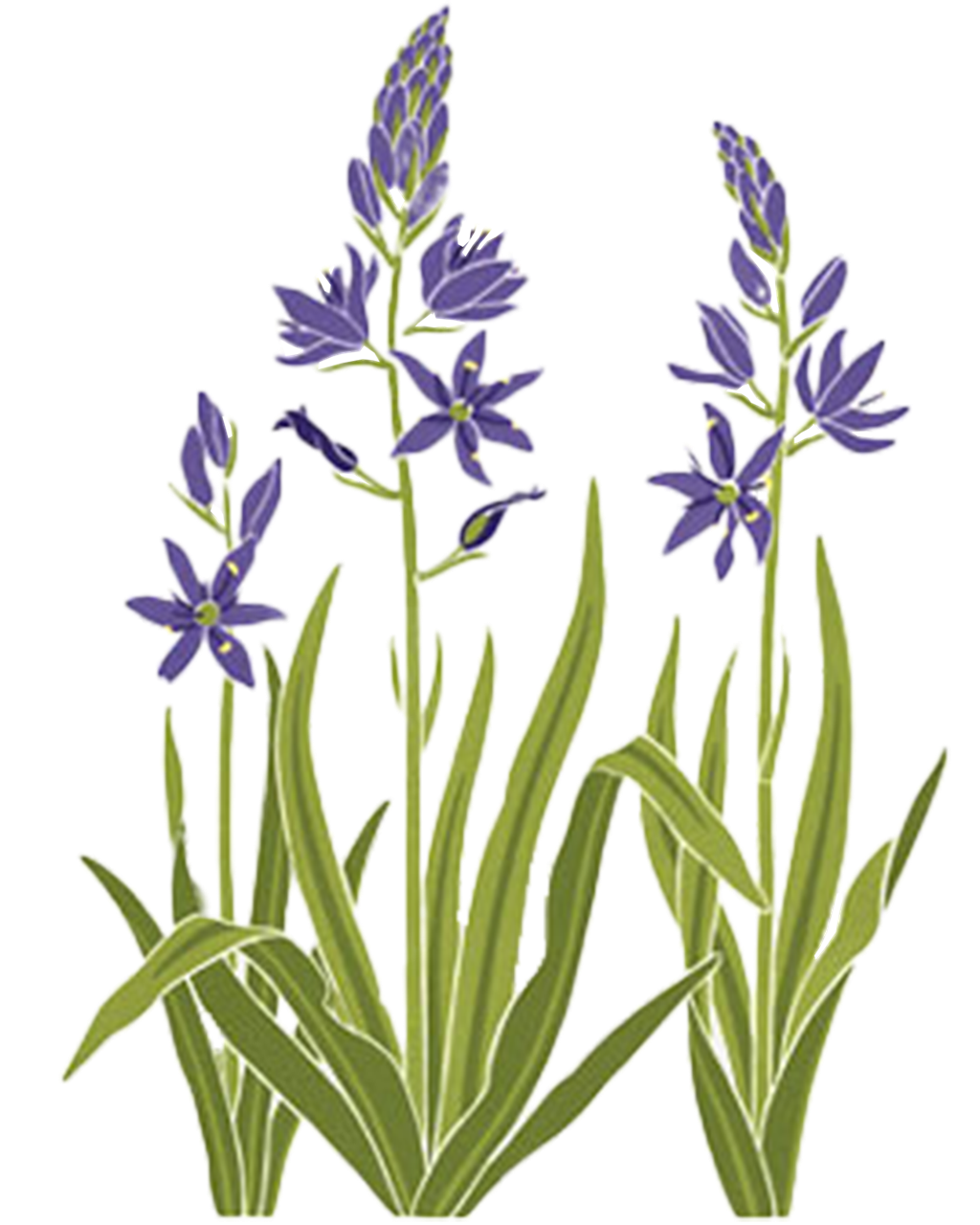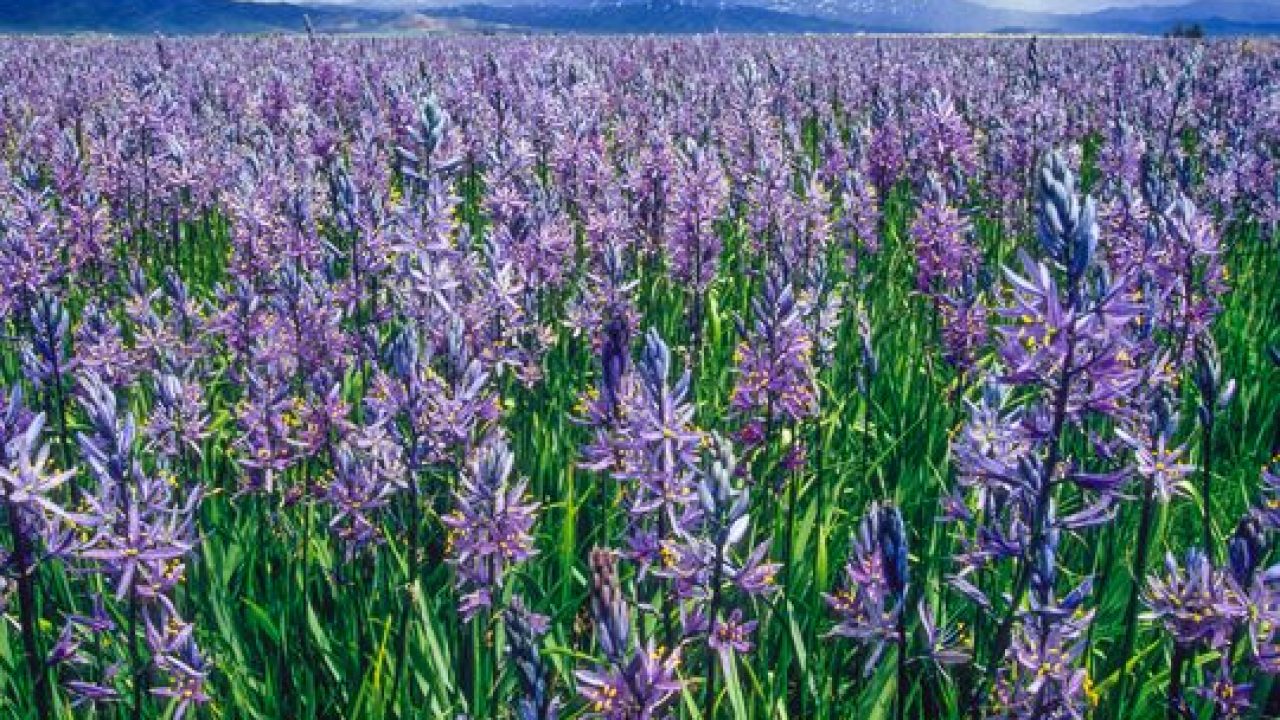|
|
|
The Camas Plant
Tough cord-like roots penetrate into the soil from the bulb base. In spring, several narrow, slightly folded leaves rise erect from the bulb, but later become lax, reaching 50 to 60 centimetres long. A stiff flower stalk rises smartly among the leaves. Great camas (Camassia leichtlinii) sports a flower stalk that may reach 100 centimetres, whereas common camas (C. quamash) stands 80 centimetres or less. Several blooms are loosely dispersed around the upper part of the stem. Perched at the end of a stalklet, each flower faces outward. Six narrow "petals" (technically, three petals and three coloured sepals) form the showy bloom. From its centre protrude six spidery stamens and a single prominent pistil. The petals of great camas radiate evenly around the centre of the flower. However, those of common camas are arranged such that five of them cluster toward the upper half of the floral circle and the sixth one swoops down and out. Flower colour ranges from a pale bluish hue to intense dark purple. |
References
|
|
Photo Gallery
|


 A camas plant consists of an oval bulb, somewhat fleshy, grass-like leaves and a tall stalk of flowers. The bulbs are constructed from densely packed, fleshy leaf bases and are covered in a black to brown tunic. They range from 1.5 to 3.5 centimetres across to two to five centimetres long. In the wild, bulbs occur singly, but in a well-fed garden you may encounter hand-sized clusters.
A camas plant consists of an oval bulb, somewhat fleshy, grass-like leaves and a tall stalk of flowers. The bulbs are constructed from densely packed, fleshy leaf bases and are covered in a black to brown tunic. They range from 1.5 to 3.5 centimetres across to two to five centimetres long. In the wild, bulbs occur singly, but in a well-fed garden you may encounter hand-sized clusters. 


